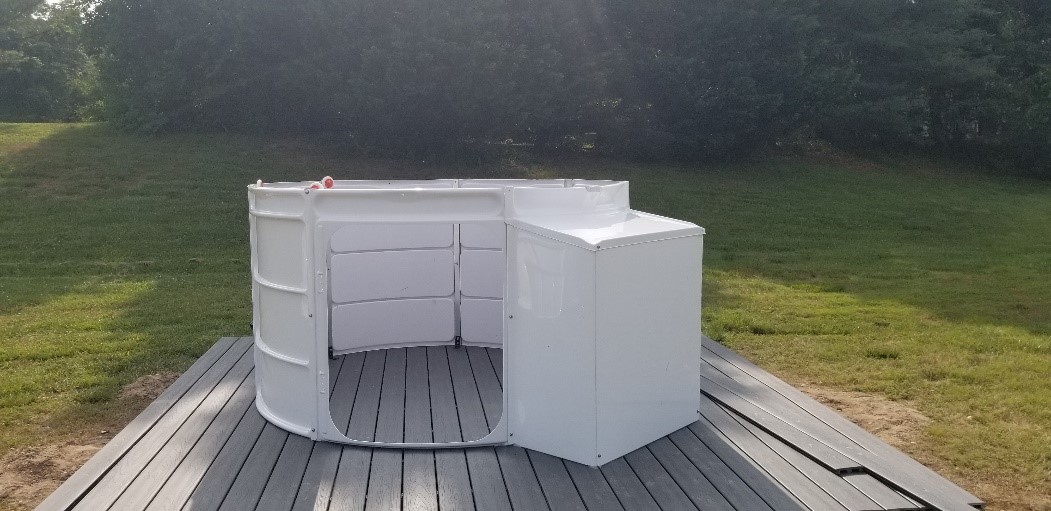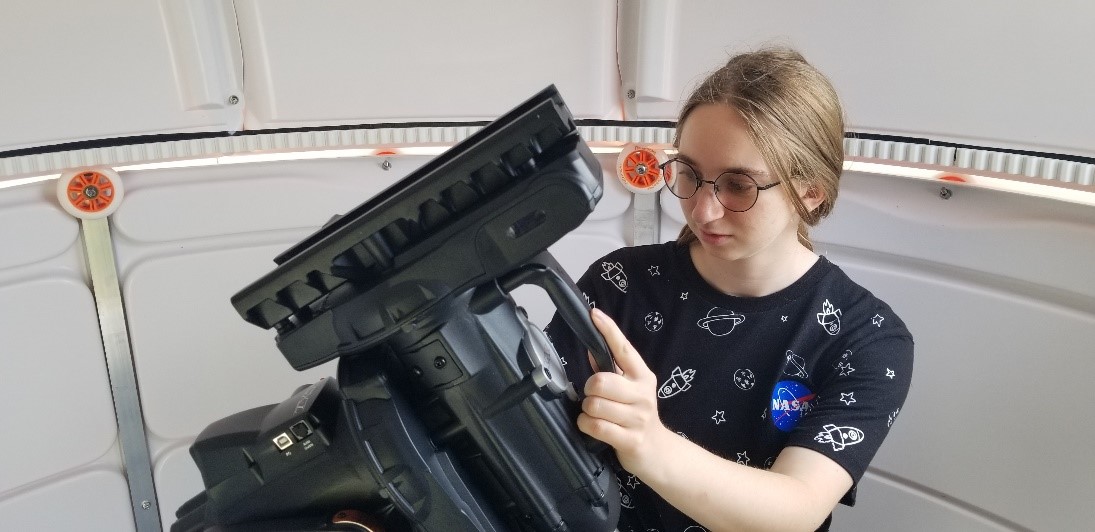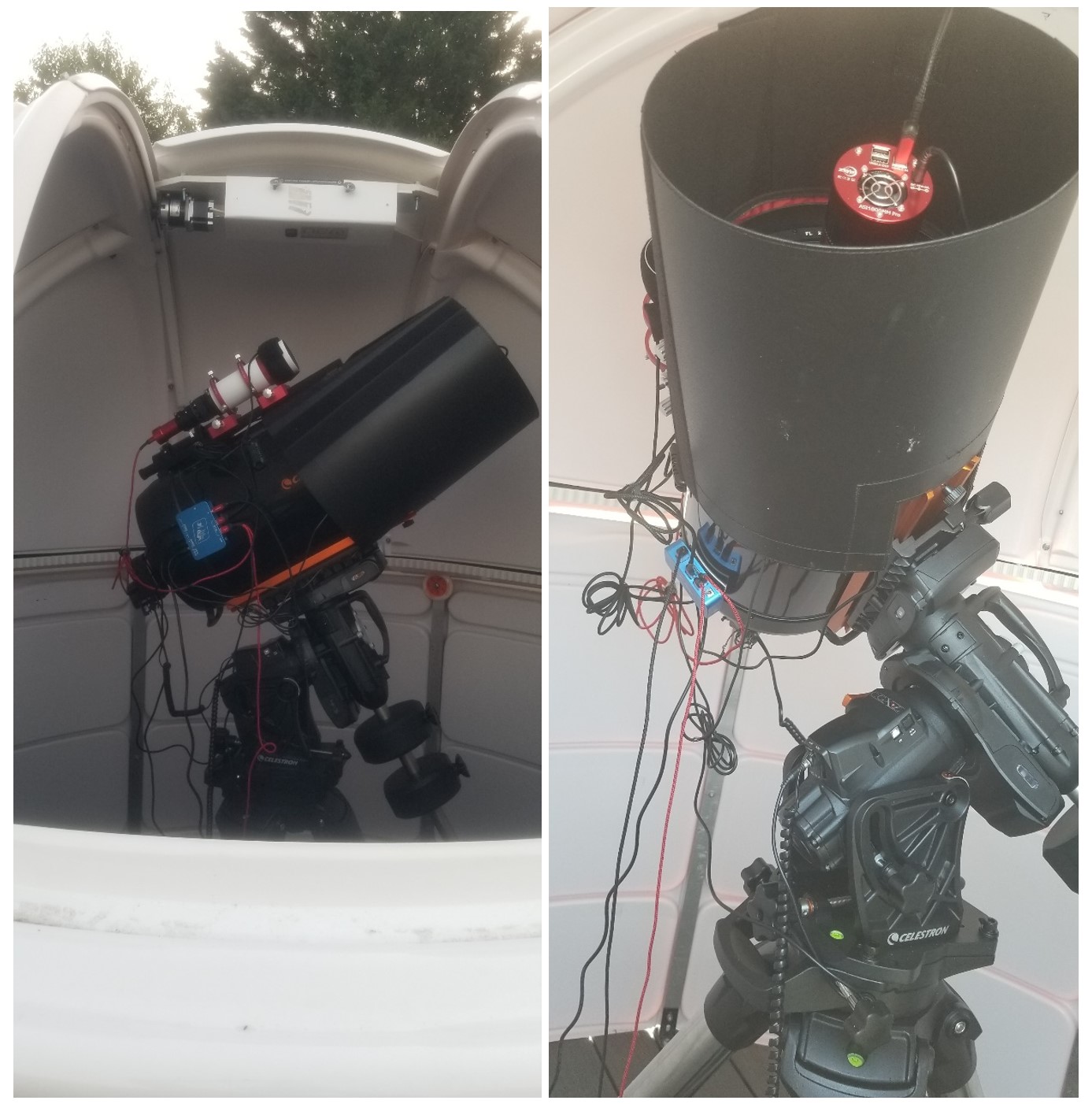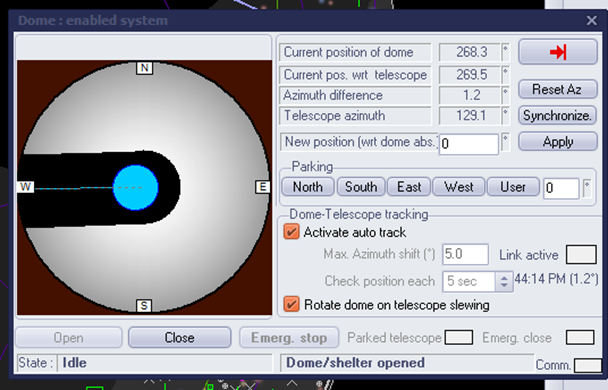After much anticipation, assembly of the ALPHA Observatory is complete! Breaking ground in an open field on campus, the Observatory is now beginning its troubleshooting and installation procedures under the direction of Astronautical Engineering Professor Marcel Mabson, with ALPHA Summer Intern Julianna Reese.
In this ALPHA teaser #6, Professor Mabson will explore additional milestones of ALPHA’s exciting journey and share its first official photo.
On June 14, 2022, the ALPHA observatory completed its construction phase and entered observatory commissioning. The commissioning phase began the next chapter in observatory operations as the team troubleshoots various observatory systems. The ALPHA observatory team would like to thank the university facilities team for building a solid deck to support the ALPHA telescope and dome structure as well as providing power to the observatory.
Observatory Rotation and Shutter Test
On June 8, the observatory base was installed on the observatory platform which will support the dome assembly. A side bay was also assembled, which will contain the control computer, wireless hotspot, webcam, and weather monitoring station. The team verified the initial curvature of the base to ensure smooth dome rotation prior to placing the dome onto the base. Later that afternoon, the dome was placed onto the base and the team manually rotated it to ensure nothing prevented dome rotation. During this manual rotation test, the team found that one of the base supports was impacting the dome, and they quickly disassembled that section, adjusted the support, and reinstalled/verified manual dome rotation operation.
To operate the dome shutter and dome rotation, two sets of motors are used: one to rotate the dome and the other to raise and lower the dome shutter. While the rotation motor installation occurred without issue, ALPHA intern Julianna Reese discovered on the first powered shutter motor activation that the motor would only open the shutter 40%. The team adjusted the shutter height and trimmed the shutter motor guide plate, which allowed the required clearance.
On June 14, the shutter motor successfully opened the dome shutter to 100% in 60 seconds. The team also performed ALPHA’s first powered rotation test. Each motor was exercised over 15 times to ensure no additional adjustments were required.
ALPHA Telescope Moving Day!
On the morning of June 14, the ALPHA observatory team agreed that the observatory was ready for the ALPHA telescope to be added inside. The telescope was disassembled in the lab and carefully transported to the observatory site. The telescope’s equatorial mount was roughly polar aligned and telescope systems such as guide camera, dew heaters, power, and focuser were reassembled to prepare for ALPHA’s first light activities.
ALPHA First Light
The term “First Light” in astronomy refers to when an instrument is pointed to the sky to collect data for the first time, thus the first time the instrument “sees light” in a sense. First light images are usually the last item on a instrument’s “to-do” list, as this will be the first time the instrument has operated in its intended environment and additional calibration data is captured before an official image can be obtained. For ALPHA, its first light objectives were 1) Manually focus guide and main scope, 2) check optical collimation, 3) bring mount closer to the polar axis 4) perform auto guide calibration and 5) take a first light image. The team successfully completed all items around 2:30am on June 15 and decided to attempt a first light image. The team slewed the telescope toward the full moon and captured ~300 frames of data. The following day Julianna processed the image and produced ALPHA’s first lunar image.
Telescope / Dome Synced
On ALPHA’s first night of operations, the dome and telescope moved independently of each other, however. In nominal operations, both will move together. This is known as Telescope/Dome syncing. As ALPHA moves from target to target, the dome will rotate at the same time. The goal is to position the dome opening or slit so that the telescope has a clear view and is not obstructed by the dome. To accomplish this, the control software needs to know the precise location of the telescope with respect to the dome. Julianna calculated what is known as the “dome geometry” and provided the measurements to the control software. After additional adjustments, the syncing operation was completed and verified on a subsequent observation night.
Stay tuned for more exciting updates on the ALPHA Observatory!
To read our past ALPHA teaser series posts, click below:
Skywatching with Professor Mabson | ALPHA Teaser Series #1
Orbiting the Unknown │ ALPHA Teaser Series #2
Eyes to the Universe | ALPHA Teaser Series #3
ALPHA Observatory Telescope Building Momentum at Capitol Tech | ALPHA Teaser Series #5
For more information on our Astronautical Engineering program, view our website or contact the Capitol Tech Admissions team.








